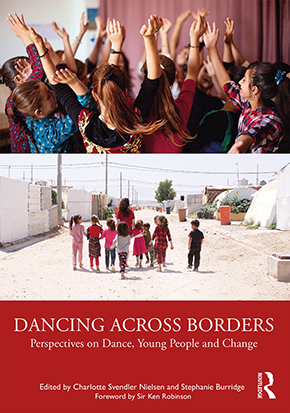 June 19, 2020 (Jackson, Miss.) - Belhaven University Associate Professor of Dance Ravenna Tucker Wagnon, and dance alumna Lydia Mathis '19 are both featured contributors in a newly published book,Dancing Across Borders: Perspectives on Dance, Young People and Change.
June 19, 2020 (Jackson, Miss.) - Belhaven University Associate Professor of Dance Ravenna Tucker Wagnon, and dance alumna Lydia Mathis '19 are both featured contributors in a newly published book,Dancing Across Borders: Perspectives on Dance, Young People and Change.
Edited by Charlotte Svendler Nielsen and Stephanie Burridge, Dancing Across Borders highlights how student learning is enhanced by cultural diversity, experiential teaching and learning involving social, cross-cultural, and personal dimensions. The book is a collection of writings by dance theorists and practitioners who are actively working across borders to impact young people globally.
Wagnon, who wrote the chapter “A step offstage to restage: RememberingSwan Lake," said, “My chapter is about my transition from a principal dancer with The Royal Ballet into a role of teaching and mentoring my college dancers and how the first career informed the second.”
Mathis wrote a chapter entitled, "Unlocking joy in the body: Creative movement with Yazidi refugees in Northern Iraq." Mathis said, “My chapter, a case narrative, discusses the implications of using dance as a therapeutic tool for displaced and traumatized refugee children. I walk through the learning process of teaching in Iraq in the aftermath of ISIS terrorism, specifically looking at how dance is able to bring unique elements of healing.”
Other chapters feature perspectives on dance and cultural diversity, alongside case narratives that show these perspectives in a specific cultural setting. Each section charts the processes, change and transformation in the lives of young people through dance.
The editors discovered Mathis from a news story by CNN. Mathis spent a month in war-torn Northern Iraq, helping refugees combat trauma through dance. CNN's Great Big Story documented her experience and featured her story on a national platform. Mathis said, “They (Neilson and Burridge) contacted me as well as Ms. Wagnon and asked us to contribute to the book.” Burridge worked with Wagnon in the past and recognized her experiences as a former dance practitioner who transitioned into a second longer-spanning career as a ballet teacher.
According to Neilson and Burridge, the book can be an invaluable resource for teachers, policy makers, artists and scholars interested in pedagogy, choreography, community dance practice, social and cultural studies, aesthetics and interdisciplinary arts.
Wagnon observed, “I think a book like this is important because it shows how dance crosses borders to reach what you never realize is possible and how it continues to touch people's lives in such diverse ways. Dance educates and builds community and how it does this is important to discover more.”
